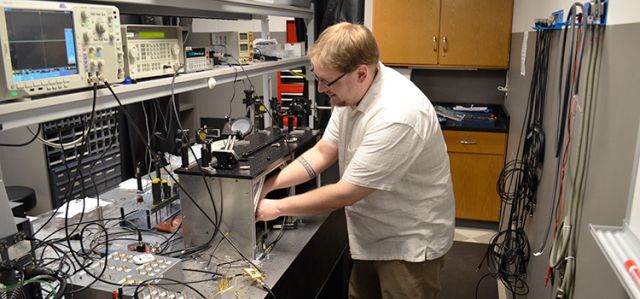Document Type
Dissertation
Publication Date
6-4-1991
Abstract
Real-time holographic recording using an optical heterodyne scanning technique was proposed by Poon in 1985. The first part of this dissertation provides a detailed theoretical treatment of the technique, based on a Gaussian beam analysis. Topics to be addressed include the derivations of the optical transfer function (OTF) and impulse response of the scanning holographic recording system, reconstructed image resolution and magnification, methods of carrier frequency hologram generation and experimental verification of the recording technique based on careful measurements of a hologram corresponding to a simple transmissive slit. Furthermore, computer simulations are presented pertaining to the incoherent nature of the scanning holographic process and it is shown that this new technique can be used to reduce the effects of bias buildup common in conventional incoherent holographic methods.
The reconstruction of holograms generated by the heterodyne scanning technique is then considered in the second part of the dissertation. The primary concentration is on real-time reconstruction using an electron beam addressed spatial light modulator (EBSLM). For comparison, experimental coherent reconstruction methods are presented as well. Additional topics to be addressed are the spatial frequency limitations of the EBSLM and the derivation of the overall incoherent point spread function (PSF) for the holographic imaging (recording/reconstruction) system. Based upon the derived overall PSF, the reconstructed real image of a simple slit object is formulated, compared to, and shown to be consistent with experimental observations.
Document Version
Published Version
Copyright
Copyright © 1991, Bradley D. Duncan
Publisher
Virginia Polytechnic Institute and State University
Place of Publication
Blacksburg, VA
eCommons Citation
Duncan, Bradley D., "Investigation of Real-Time Optical Scanning Holography" (1991). Electro-Optics and Photonics Faculty Publications. 39.
https://ecommons.udayton.edu/eop_fac_pub/39




Comments
Document is made available for download with the author's permission. Permission documentation is on file.